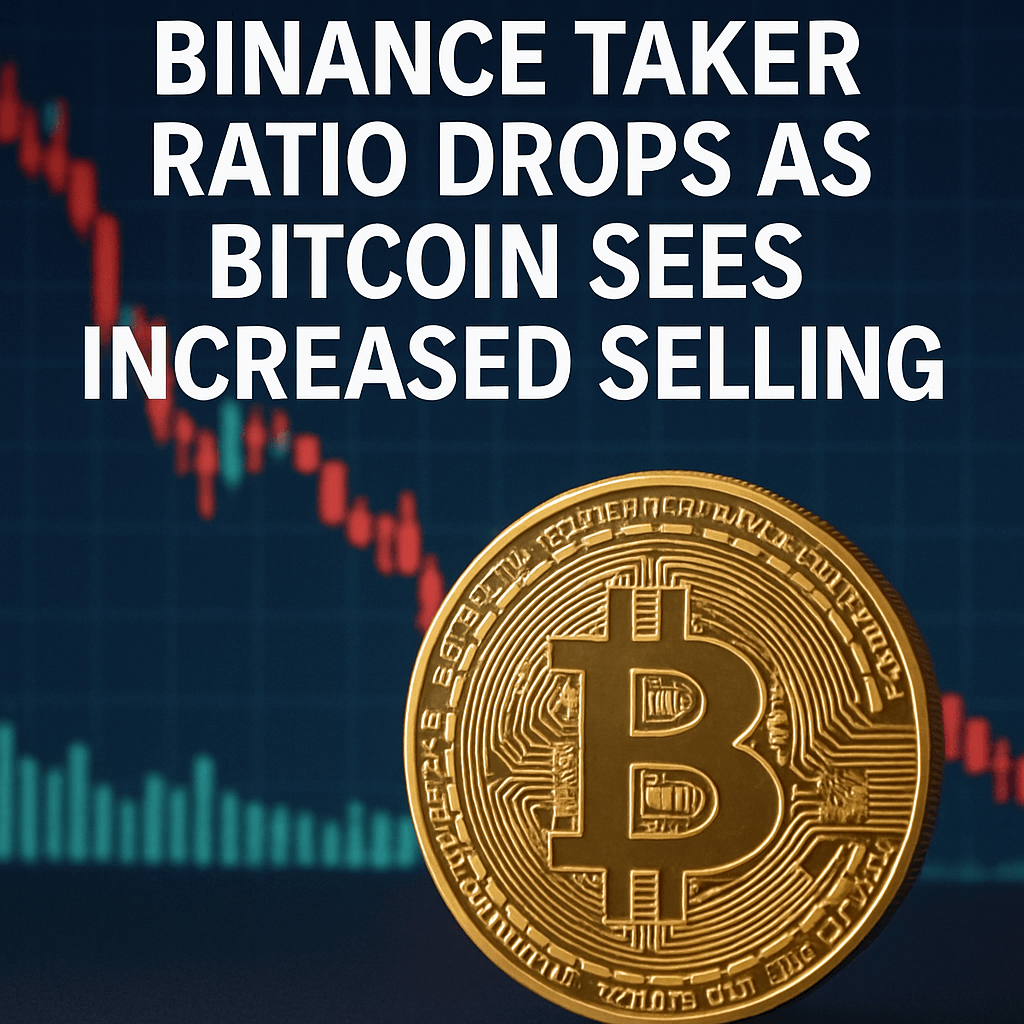Binance Taker Ratio Drops as Bitcoin Sees Increased Selling

Bitcoin (BTC) has recently experienced a marked retracement after achieving a record high above $111,000 last month. Currently priced at $104,115, the cryptocurrency has declined approximately 5.2% over the past week, indicating a near 7% drop from its peak price. This sudden decrease has garnered significant attention among market participants, leading many to closely watch potential signals that may indicate Bitcoin’s next directional move.
Binance’s Dominance in the Market
A recent analysis from CryptoQuant contributor Crazzyblockk provides a comprehensive examination of the internal dynamics driving this price action. In his report titled “Divergence of Binance Taker Buy/Sell Behavior From Other CEXs — Sellers Outnumber Buyers on the Market’s Main Venue,” the analyst delineates trading behaviors observed across major cryptocurrency exchanges, with a particular focus on Binance. Notably, Binance controls approximately 60% of the global Bitcoin spot trading volume, making its trading activity particularly relevant to market dynamics.
The analysis indicates a divergence between Binance and other major centralized exchanges (CEXs). While some exchanges have recorded a brief spike in overall buying activity, Binance exhibited a significant tilt towards selling, leading to a Taker Buy/Sell ratio dropping below 1.0. This ratio falling below unity indicates a net selling pressure, as more Bitcoin is being sold than purchased on Binance, contrasting sharply with the net-buy behavior happening elsewhere across other platforms.
Historical Context and Market Sentiment
Historically, divergent trading behaviors on Binance have led to notable price corrections. For example, in February 2024 and August 2023, deviations in Binance’s trading patterns resulted in Bitcoin price corrections ranging between 5% and 10%. Given that historical trends highlight Binance’s role as a market leader, this recent behavior warrants close scrutiny.
As of late, metrics reveal that Binance’s Taker Buy/Sell ratio currently stands around 0.98, signifying a 12% reduction over just the past week and a substantial 25% drop compared to the previous month. This suggests a prevailing bearish sentiment among Binance traders. Despite a brief overall surge in market buying activity across exchanges, with the aggregate Taker Buy/Sell ratio peaking at approximately 1.35, Binance’s bearish posture has tempered this bullish momentum, causing the broader market indicator to revert downward swiftly.
The Implications for Bitcoin’s Near-Term Price Movement
The interplay of Binance’s trading activities can significantly amplify market volatility through the influence of futures market funding rates, often leading to larger price swings. The recent decline in the Taker Buy/Sell ratio highlights the risks of market manipulation and potential bull traps. As the CryptoQuant analyst emphasizes, because the largest liquidity pool is net-selling, the aggregate uptick may risk becoming a bull trap unless Binance’s Taker Buy/Sell ratio decisively turns above 1.05 and holds. Failing to achieve this could signal an increased probability for near-term price declines, as broader market sentiment realigns with the liquidity flows from the exchange.
Investor Behavior and Market Reactions
- Market Monitoring: Investors are advised to monitor Binance trading volumes closely, as they could serve as a barometer for the overall market sentiment.
- Volatility Management: With heightened volatility anticipated, market participants might consider protective measures such as stop-loss orders to mitigate potential adverse price movements.
- Market Trend Analysis: Observing correlation patterns between Bitcoin and altcoin performances can provide additional insights into market dynamics.
“Unless Binance’s Taker Buy/Sell flips decisively above 1.05—and stays there—expect heightened volatility and a greater probability of a near-term price decline as broader sentiment realigns with the market leader’s flows.” – Crazzyblockk, CryptoQuant Analyst
In summary, the current market metrics reflect a complex interplay of buying and selling pressures predominantly influenced by Binance activities. Traders and investors will need to navigate the resultant volatility carefully as they prepare for potential shifts in Bitcoin’s trajectory.
Source: newsbtc